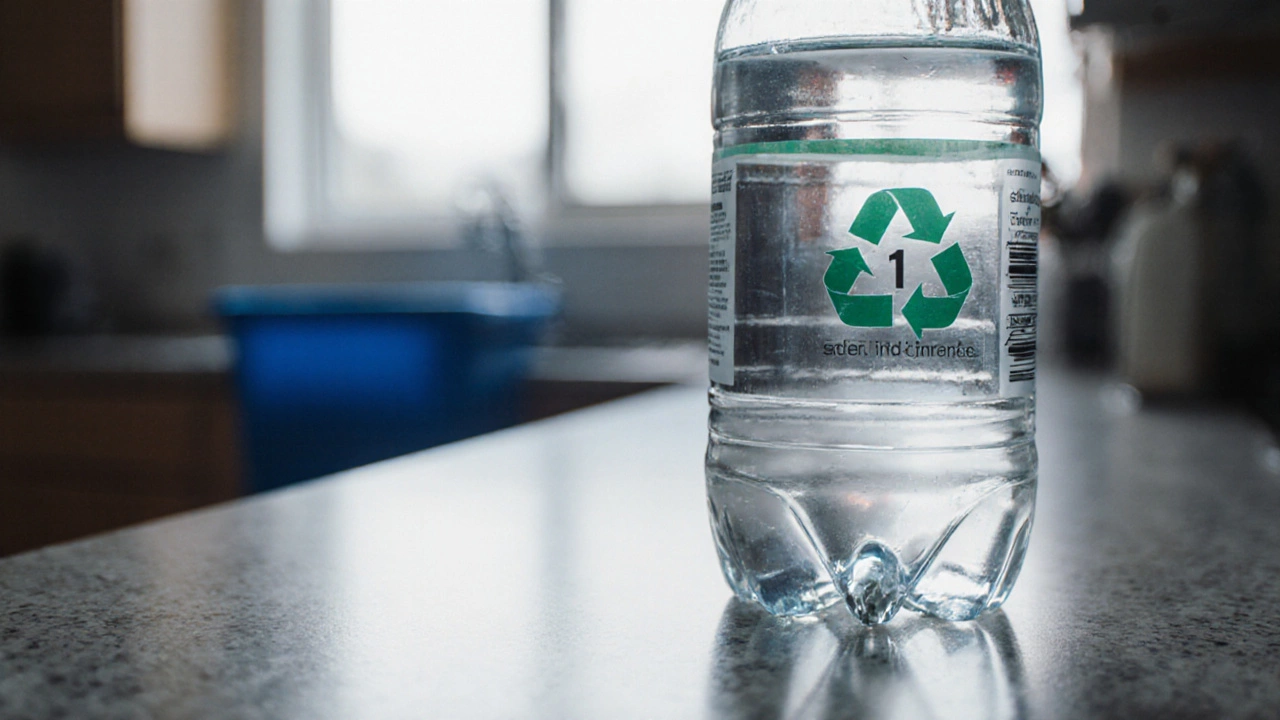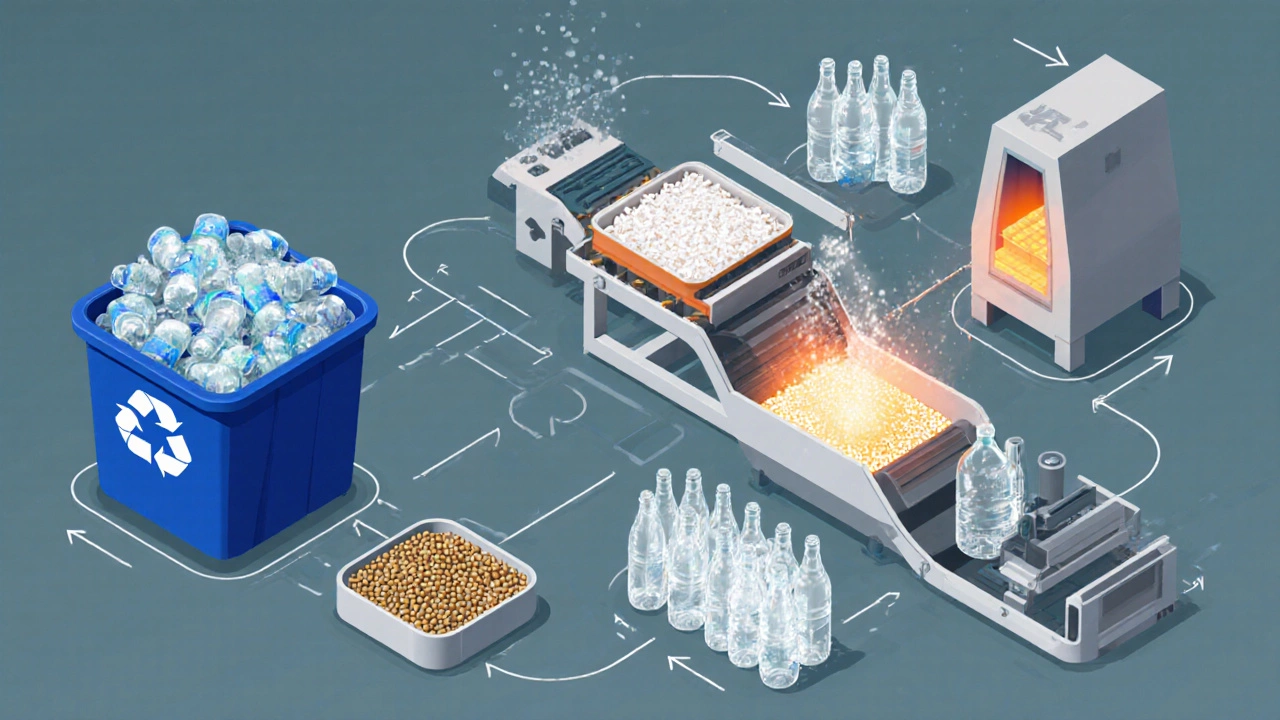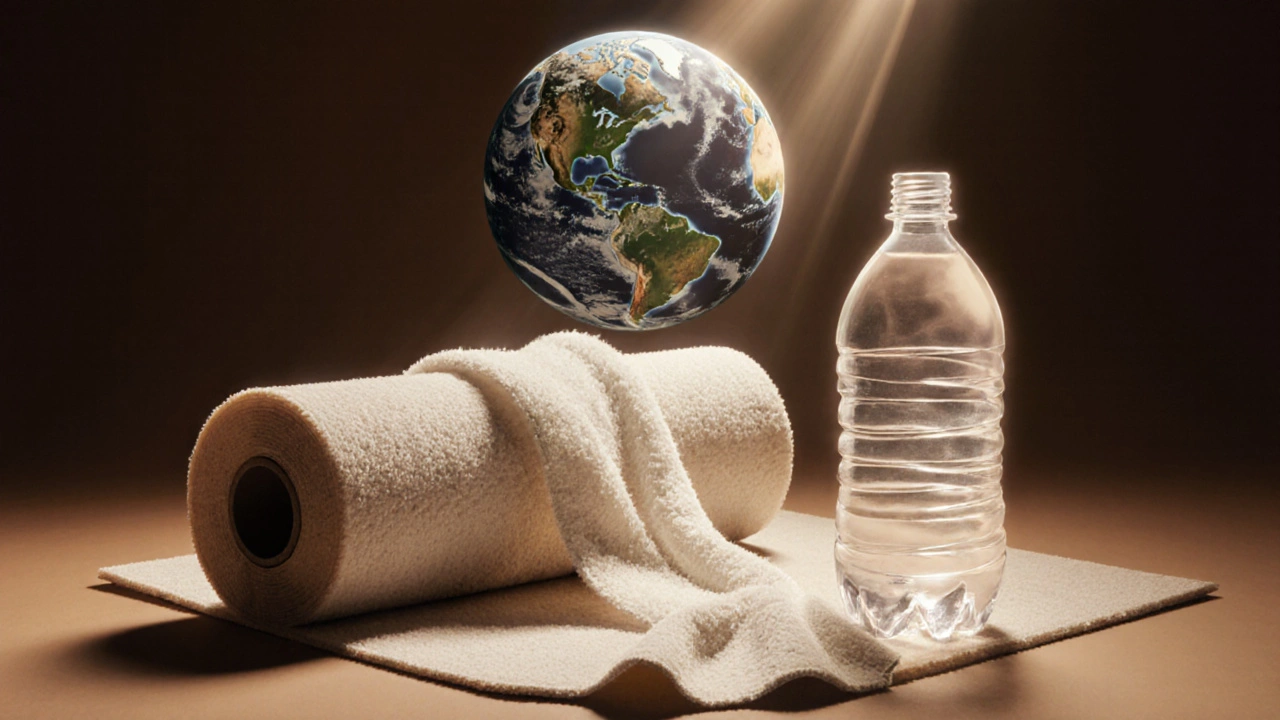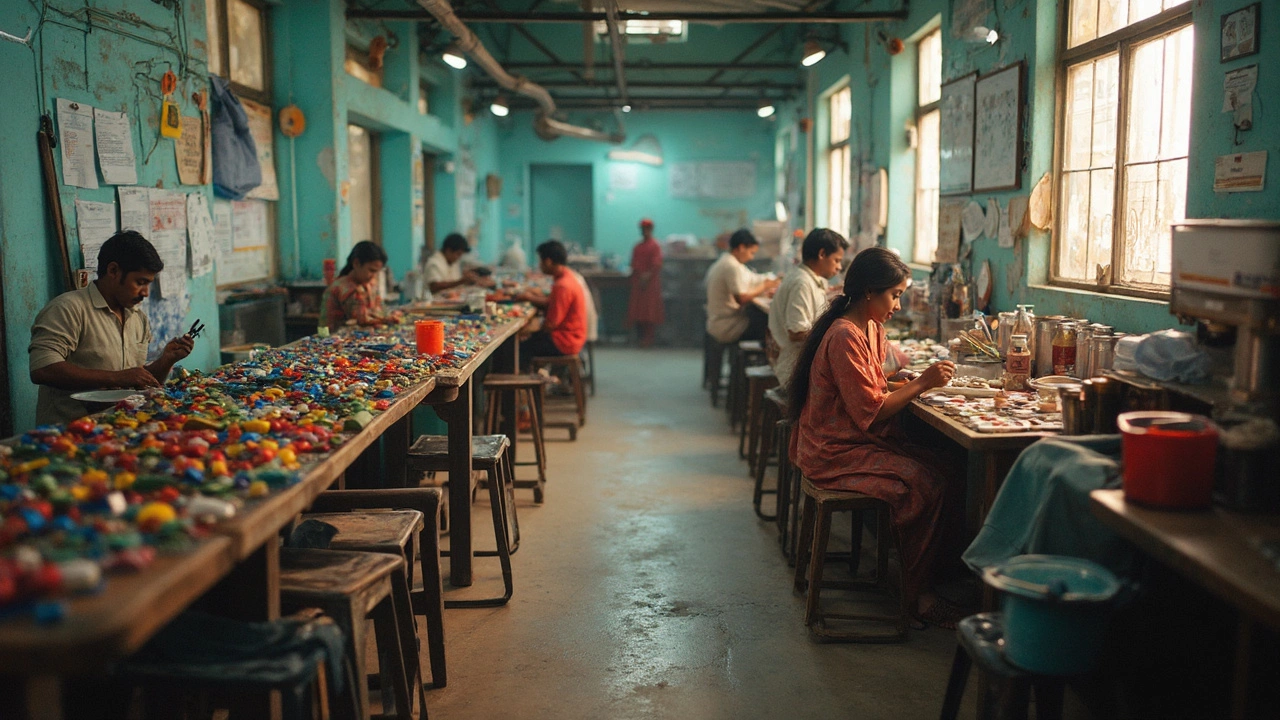Understanding Plastic Recycling Number 1: PET Explained

PET Recycling Guide
What is PET?
Polyethylene terephthalate (PET) is a clear, lightweight plastic with recycling code 1. It's commonly found in water bottles, soda bottles, and food containers.
Why Recycle PET?
Recycling PET reduces energy consumption by 30% and cuts CO₂ emissions by 1.5 kg per kilogram of rPET produced.
Check Your PET Bottle
Identify if your plastic bottle is PET by checking for the recycling code 1 inside the triangle symbol.
PET Recycling Process
Collection
Sorting
Cleaning
Extrusion
Manufacturing
The recycling chain transforms used PET bottles into new products like rPET pellets, which can be remanufactured into bottles, textiles, or packaging materials.
Consumer Tips
- 1Rinse bottles before recycling
- 2Flatten bottles to save space
- 3Keep PET separate from other plastics
- 4Look for recycling symbol with code 1
- 5Consider refillable options
Key Takeaways
- Number1 on plastic bottles stands for polyethylene terephthalate (PET), a lightweight, clear polymer.
- PET is widely used for water, soda and food containers because it’s strong, cheap and recyclable.
- Recycling PET creates rPET, which can become new bottles, textiles or packaging, reducing demand for virgin plastic.
- Proper collection, sorting and cleaning are essential - the UK’s recycling system accepts PET in most curb‑side bins.
- Knowing the code helps you choose sustainable alternatives and support a circular economy.
When you glance at the little triangle on a plastic bottle and see the number 1, you’re looking at the most common recycling code. It tells you the material inside - in this case, Polyethylene terephthalate (PET). PET is a clear, lightweight polymer that you’ll find in bottled water, soft drinks, salad dressings and even some food‑service trays.
What Makes PET Different from Other Plastics?
PET belongs to a family of polymers that each have a recycling number. Here’s how PET stacks up against the most common rivals:
| Number | Polymer | Main Applications | Recyclability |
|---|---|---|---|
| 1 | PET | Bottles, food trays, fibers | High - widely accepted |
| 2 | HDPE | Milk jugs, detergent bottles | High |
| 3 | PVC | Pipes, credit cards | Low - often down‑cycled |
| 4 | LDPE | Plastic bags, food‑wrap film | Medium |
| 5 | Polypropylene (PP) | Yogurt cups, bottle caps | Medium‑high |
Why PET Became Number1 in the Beverage Industry
The rise of PET started in the 1970s when Coca‑Cola and other drink makers needed a container that could hold carbonated liquids without cracking. PET offered three big advantages:
- Lightweight - a PET bottle is up to 30% lighter than glass, cutting transport fuel use.
- Clarity - consumers see a clear product, which boosts appeal.
- Barrier properties - PET keeps carbon dioxide in and oxygen out, preserving fizz.
Today, over 60% of single‑use beverage packaging in the UK is PET, according to the Plastics Recycling Association.

How PET Is Collected and Recycled
Recycling PET follows a straightforward but essential chain:
- Collection: Most UK councils accept PET in the blue recycling bin or at dedicated collection points.
- Sorting: Facilities use near‑infrared (NIR) scanners to separate PET from other plastics.
- Washing: The flakes are cleaned of labels, food residues and adhesives.
- Re‑extrusion: Clean PET flakes are melted and formed into pellets, known as recycled PET (rPET).
- Remanufacturing: rPET pellets feed into injection‑moulding or blow‑moulding machines to create new bottles, polyester fabrics, carpet backing, or food‑grade trays.
Each step loses a tiny amount of material quality, which is why some high‑performance applications still rely on virgin PET. However, advances in cleaning technology now allow rPET to meet strict food‑contact standards.
Benefits of Using rPET
Switching to rPET brings tangible pluses:
- Resource savings: Producing 1kg of rPET uses about 30% less energy than virgin PET.
- Carbon reduction: The same 1kg saves roughly 1.5kg of CO₂ emissions.
- Waste diversion: Every tonne of rPET keeps that weight out of landfills or incinerators.
- Market demand: Brands like Nestlé and Unilever have set targets to increase rPET content to 50% by 2025.
Common Misconceptions About PET Recycling
People often wonder if PET can be recycled forever. The short answer: PET can be recycled multiple times, but each cycle degrades polymer chains slightly. That’s why most recycling loops blend rPET with a small percentage of virgin PET to maintain strength.
Another myth is that PET bottles are “biodegradable”. They’re not - PET can take hundreds of years to break down in the environment, which is why proper recycling is vital.

Tips for Consumers: Make the Most of the Number1 Code
Here’s a quick checklist to ensure your PET ends up as rPET rather than garbage:
- Rinse bottles - a quick rinse removes sugary residue that can contaminate the batch.
- Flatten large bottles - saves space in collection bins.
- Don’t mix PET with food waste - keep it dry.
- Look for the recycling symbol with the number 1 before buying - it guarantees the product is recyclable in most UK schemes.
- Consider refillable options - many supermarkets now offer water refill stations that cut PET use entirely.
Alternatives and the Future of Plastic Bottles
While PET remains king today, several alternatives are gaining ground:
- Aluminum cans: 100% recyclable, lightweight, and increasingly sourced from recycled metal.
- Plant‑based polymers (e.g., PLA): Compostable under industrial conditions but not yet widely accepted in curb‑side bins.
- Glass: Reusable, but heavier and more energy‑intensive to transport.
Regulators in England have announced a phased ban on single‑use plastic bottles in public venues by 2027, pushing manufacturers to innovate with higher rPET content or switch to alternative packaging.
Frequently Asked Questions
What does the number 1 on a plastic bottle mean?
It identifies the bottle as made of polyethylene terephthalate (PET), the most widely recycled plastic in the UK.
Can I recycle PET bottles with other plastics?
No. PET must be kept separate from HDPE, PP, or other codes because the recycling process differs. Most curb‑side bins have a separate stream for PET.
Is recycled PET (rPET) safe for food contact?
Yes, when processed to food‑grade standards. Major brands use rPET for new beverage bottles that meet EU food‑safety regulations.
How many times can PET be recycled?
PET can be recycled 3-5 times before the polymer degrades too much for high‑strength applications. After that, it’s usually down‑cycled into textile fibers or carpet backing.
What should I do with PET that doesn't have a recycling symbol?
If the material looks like clear, rigid plastic, it’s likely PET, but without the code you should check your local council's guidance. When in doubt, place it in the general recycling bin - staff will sort it correctly.





